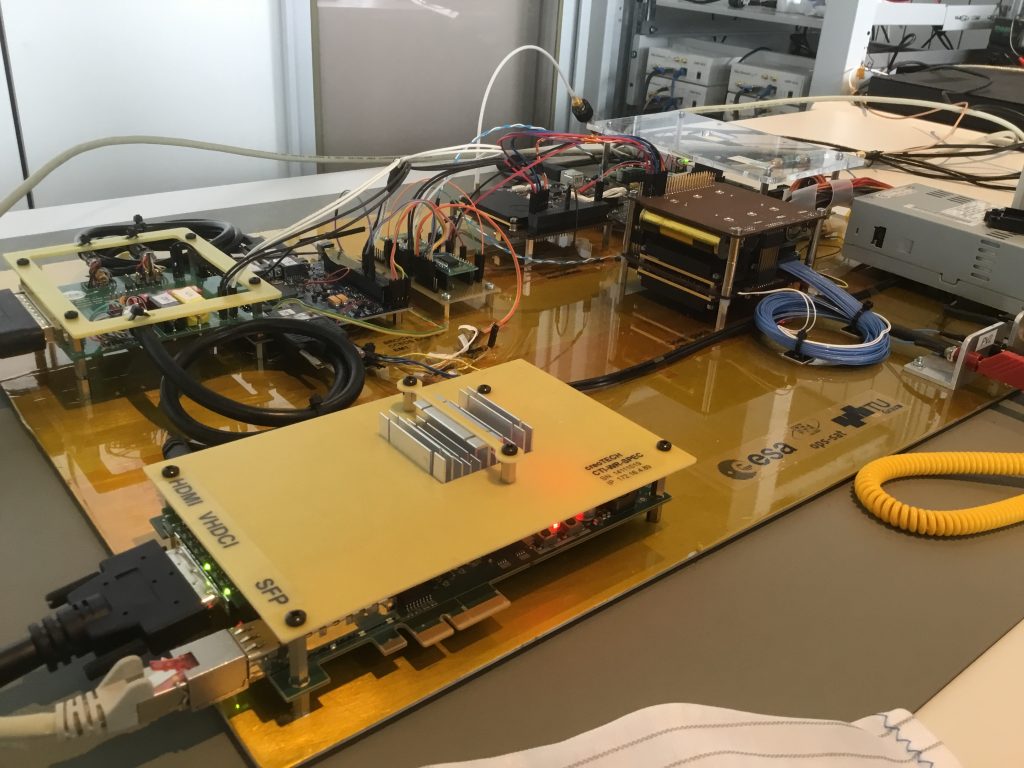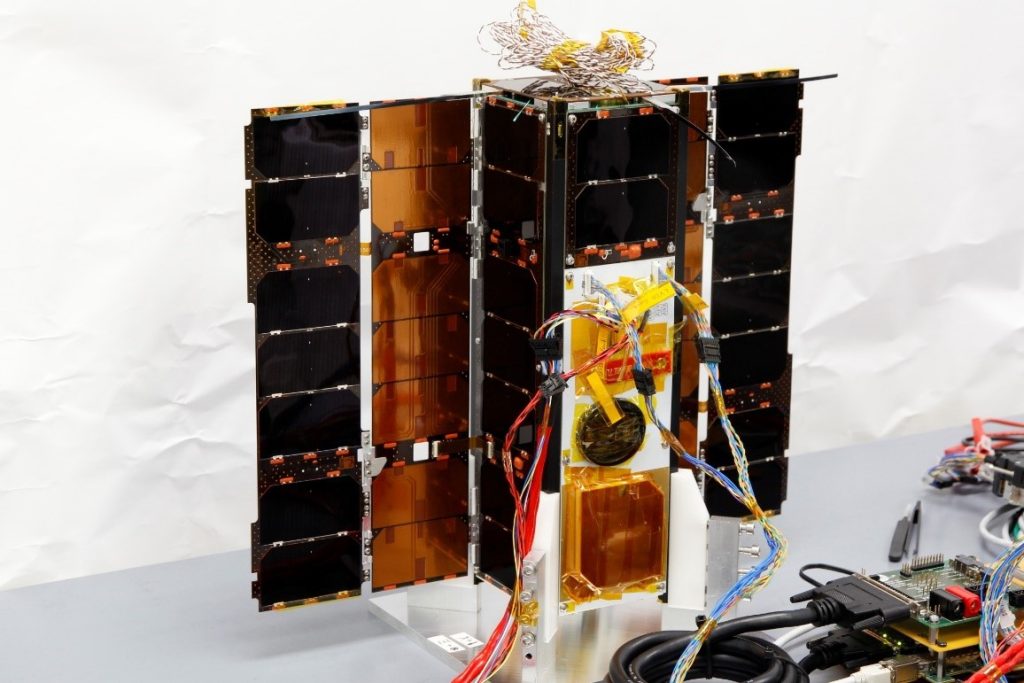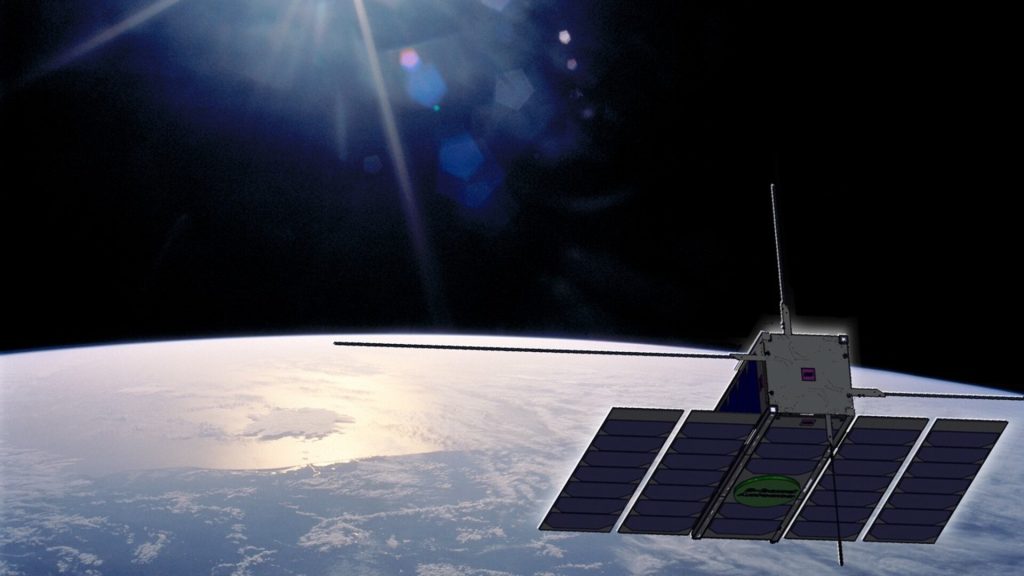How the first ESA CubeSat enables in-orbit demonstration of spacecraft software
Author: Tuomas Simula, Leonardo Times Editor
OPS-SAT, the first CubeSat mission of the European Space Agency, was designed to break the “has not flown, will never fly” cycle that often obstructs advances in space technology. It is a powerful orbital laboratory that allows experimentation of spacecraft control systems. We interviewed members of the OPS-SAT team to learn about the possibilities it creates for the in-flight testing of space software.
Space technology is often considered the cutting edge of technology, but, in reality, it tends to advance slowly. Especially the larger and more complicated space missions often rely on technology that is decades old by the time the spacecraft is launched. One reason is that space is a very harsh and unforgiving environment that is impossible to recreate perfectly in laboratories – testing new technology suitable for this environment is expensive and time-consuming. Therefore, space mission designers tend to select components with flight heritage, that is, components that have already successfully been used on previous missions. This phrase nicely sums it up, “has not flown, will never fly.” The first CubeSat operated by ESA, OPS-SAT, was designed to break this cycle, specifically within spacecraft control and operations.
The story of OPS-SAT began in 2011 at the European Space Operations Centre (ESOC) in Darmstadt, Germany, with a proposal for a low-cost orbital platform for experimental mission control software. The Austrian University TU Graz developed the satellite and launched it into space in 2019. The satellite was based on a commercial 3U CubeSat bus to minimize the mission costs. Its most significant feature is its advanced processing platform, which provides significantly more processing power than traditional spacecraft processors. The redundant platform containing powerful processors and FPGA modules (reprogrammable electrical circuits) allows OPS-SAT to run the Linux operating system. Therefore it supports high-level programming languages such as Python or Java, making reprogramming the satellite significantly easier than satellites running traditional low-level software. The interface of the satellite even allows experimenters to connect to the satellite directly over the internet when it passes its ground station.
A NOVEL APPROACH FOR ESA
OPS-SAT is the first CubeSat developed and operated by ESA and generally, the first ESA mission classified as a nanosatellite. This has allowed the OPS-SAT team to approach both the design and operation of the satellite in ways that differ from traditional ESA missions. One significant difference is that, in line with its ethos of breaking the “has not flown, will never fly” cycle, the satellite contains commercial hardware that has not been used on previous space missions. For example, its main processing platform is a commercial product not specifically designed for use in space. For the satellite development, subcontractors were chosen from ESA member states that had less previous involvement in ESA missions. Another major difference for OPS-SAT is leadership by a university team, while, usually, large aerospace companies such as Airbus or OHB develop most ESA missions.
As the aim of the OPS-SAT mission is to test new spacecraft operation concepts in space, it is no surprise that also the day-to-day operations of the satellite are handled differently from other ESA missions. Instead, the satellite is operated by a small team with a flat team structure. “Task distribution is based on who is interested in or has more experience with certain subsystems,” explains Vladimir Zelenevskiy, a spacecraft operations engineer at the OPS-SAT team. “In this sense, OPS-SAT is different from other missions at ESOC, where there are preset roles with spacecraft operations engineers: one responsible for thermal and power, one for payload, one for ADCS and so on.”

MACHINE LEARNING AND STOCK TRADES
To enable experiments to take place on the satellite, the users of OPS-SAT are given considerable freedom in accessing the different subsystems of the satellite, including a camera, software-defined radio and a fine attitude control and determination system with a large variety of sensors and actuators. While OPS-SAT was designed with experiments on mission control systems in mind, its variety of subsystems, high processing power and relatively easy programmability allow for a host of possibilities for experiments. Most common are demonstrations of communication protocols and autonomous systems, and especially various concepts utilizing artificial intelligence in spacecraft operations. Examples include experiments on autonomous navigation, data compression algorithms and experiments using the satellite as a relay in a communications link.
As the objective of its mission is facilitating technology demonstrations, some systems tested on OPS-SAT have already found their use in different missions. For example, the CFDP file transfer protocol was first used on OPS-SAT, and the plan is now to use it on major ESA missions such as the Jupiter Icy Moons Explorer (JUICE). OPS-SAT was also the first satellite to test the new ESA ground segment software currently under development, which will eventually replace the entire ESA ground segment. Some systems that were originally OPS-SAT experiments have also found their use as part of their regular operations, and the experiments can sometimes build on each other. For example, a machine learning model to detect satellite images covered by clouds is now used to select which pictures are downloaded from OPS-SAT to the ground.
Besides applications such as communications and control of the spacecraft, the special features of OPS-SAT also allow for more high-flying ideas to be demonstrated. One possibility is experimenting with the cybersecurity of a spacecraft system. The team has even discussed organizing a hackathon, where teams compete to gain access to the satellite’s subsystems. Perhaps the most unexpected use for OPS-SAT is that it also hosted the first stock trade in space in collaboration with a German online broker.

AVAILABLE TO EUROPEAN UNIVERSITIES AND COMPANIES
As an ESA science mission, OPS-SAT is available free of charge to European companies, universities and organizations. Experiments are proposed to the OPS-SAT team. After explaining the purpose and scope of the experiment, the team behind the proposal will receive the required documentation and other material to develop the software for the experiment. The material includes a software development kit with a simulator, to test the software during development without access to the satellite. Before uploading the software to the actual satellite, it is tested on an engineering model to ensure it works. After fixing any problematic issues in these tests, the experiment can be uploaded to OPS-SAT and run for the required time. While the experiment is running, it can be monitored and controlled when the satellite passes over a ground station, which occurs a few times a day.
CONCLUSION
OPS-SAT is the first ESA CubeSat mission allowing European companies and organizations to test their ideas in space. From artificial intelligence to stock trades, over a hundred experiments have been run on the satellite. For information about applying to fly your experiment on OPS-SAT, visit https://opssat1.esoc.esa.int/.
The Leonardo Times would like to thank the OPS-SAT team for taking the time to answer our questions about the satellite.

